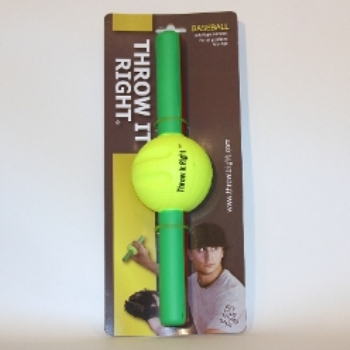| ChrisOLeary.com |
| ChrisOLeary.com > BUY > Pitching > The Epidemic |
|
This page is the original home of my first writings about the... I maintain this page so people can verify what I said, when, using the Wayback Machine. The Baseball Pitcher Injury Epidemic2014.3.18 It seems like this Spring has been a particularly bad one for elbows; a relatively large number of pitchers have had their Ulnar Collateral Ligaments fail and now have to get Tommy John Surgery as a result. I have been concerned about this happening and I think what we are seeing is just the first wave of what could be (at least) 10 to 15 years of problems. Let me explain why I say that. Fixation on VelocityAbove all else, the problem that we are facing results from a nearly exclusive fixation on velocity. Velocity sells to both coaches and scouts. As a result, pitching coaches are doing everything they can to increase their pitchers' velocity, pretty much regardless of the consequences. That is a problem because, as a pitcher's velocity goes up, so too does the load on their elbow and shoulder. The harder that pitchers throw, the greater the risk they face. However, the larger problem is that many of the pitching velocity increases that we are seeing of late are the result of the use of a number of cues, tricks, and shortcuts. And you know what your coach said about shortcuts. While these cues, tricks, and shortcuts are increasingly being labelled as proper pitching and throwing mechanics -- in large part because they will help pitchers achieve velocity increases -- they are not what the best pitchers actually do. Or, more accurately, used to do. The Inverted WOf course, part of the problems that we are seeing are due to my old nemesis the Inverted W and his cousins the Inverted L and the Inverted V. The simple fact is that the Inverted W does work -- the Inverted W is a pretty much guaranteed way of giving a pitcher a velocity boost, which is why so many people (still) teach it -- but it does so at a cost. In most cases, the Inverted W creates a timing problem that significantly increases the load on -- and usually overloads -- the pitcher's elbow and shoulder. In terms of new developments with respect to the Inverted W, as I discuss in my piece on The Science Behind the Inverted W, a recent study of the Inverted W confirmed that there is in fact a relationship between the timing problem that the Inverted W (is designed to) create and a pitcher's risk of injury. What's Being sold and taught as Good is Actually BadIn my opinion, the bigger, and to date largely unaddressed, part of the story is that there are a number of other cues that baseball coaches and pitching coaches are using, and that are increasingly widely regarded as proper throwing and/or pitching mechanics, that are actually problematic.[1] While I believe these cues will help ballplayers throw harder, I also believe they are contributing to the current plague of elbow injuries because, like the Inverted W, these cues create a timing problem that increases the load on the elbow and the shoulder. Matt HarveyAs I explain in my piece on Matt Harvey's pitching mechanics, I first came into contact with Matt Harvey when his father contacted me back in 2007 to have me take a look at Matt's pitching mechanics and make sure that he didn't have the Inverted W or any other obvious problems. I pronounced Matt clean at the time. However, at some point after I looked at him -- I believe it happened later on in college or in the minor leagues -- someone taught Matt Harvey a trick. They taught him to keep his fingers on top of the ball and to make his arm swing as long as possible. 
Matt HarveyThe result was a timing problem that gave Matt Harvey a velocity boost but that in my opinion also increased the load on his elbow (and most likely also his shoulder).  Throw It Right TrainerWhat's worse, products are now being created to reinforce the cue that I believe damaged Matt Harvey's elbow. Yes, this product may help ballplayers throw the ball harder in the short term. However, I believe that products like this will also increase the risk of elbow problems in the long term. Shelby MillerAnother emerging trend that I am seeing is pitchers who pronate too early and too long. They experience significant timing problems and, in my opinion, are at a significant risk for both elbow and shoulder problems as a result. 
Shelby Miller
|
| about | contact | copyright | sitemap | liability policy |

